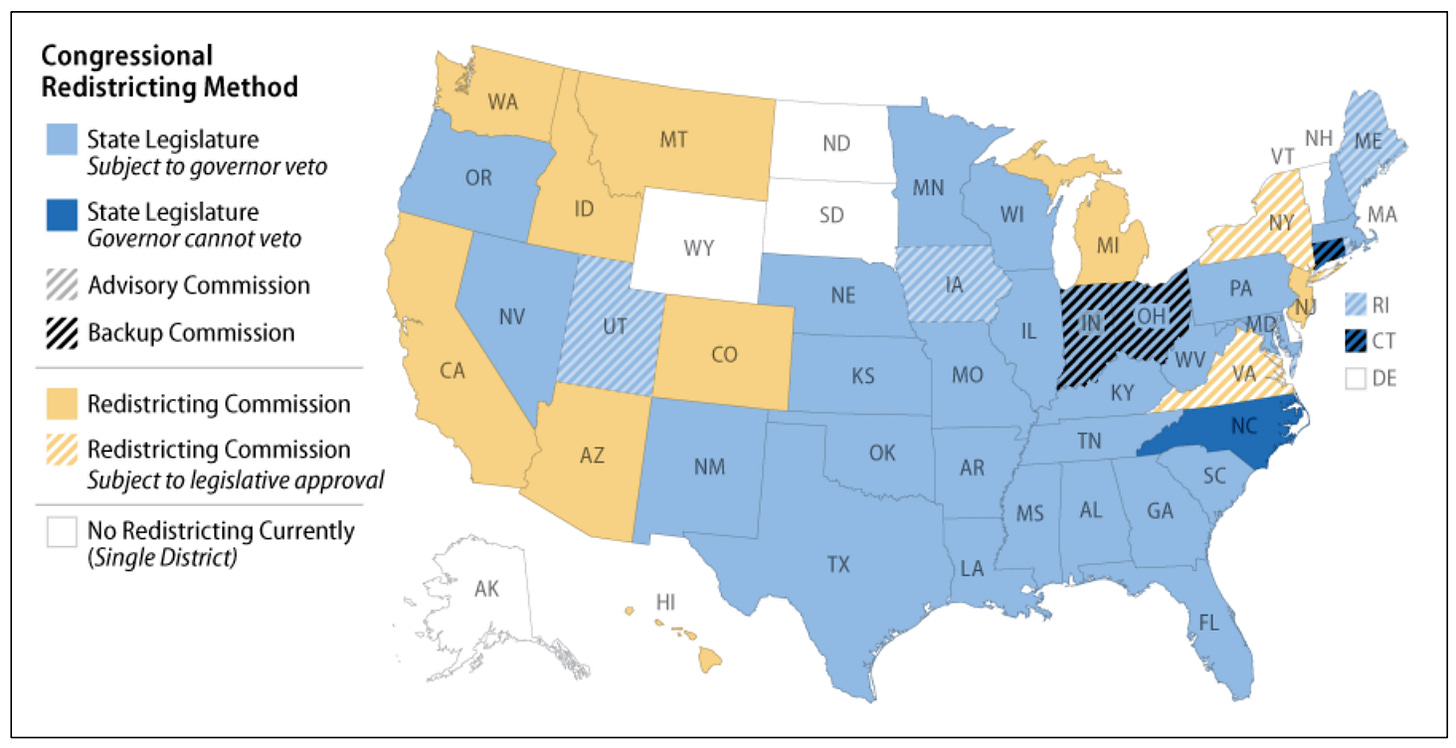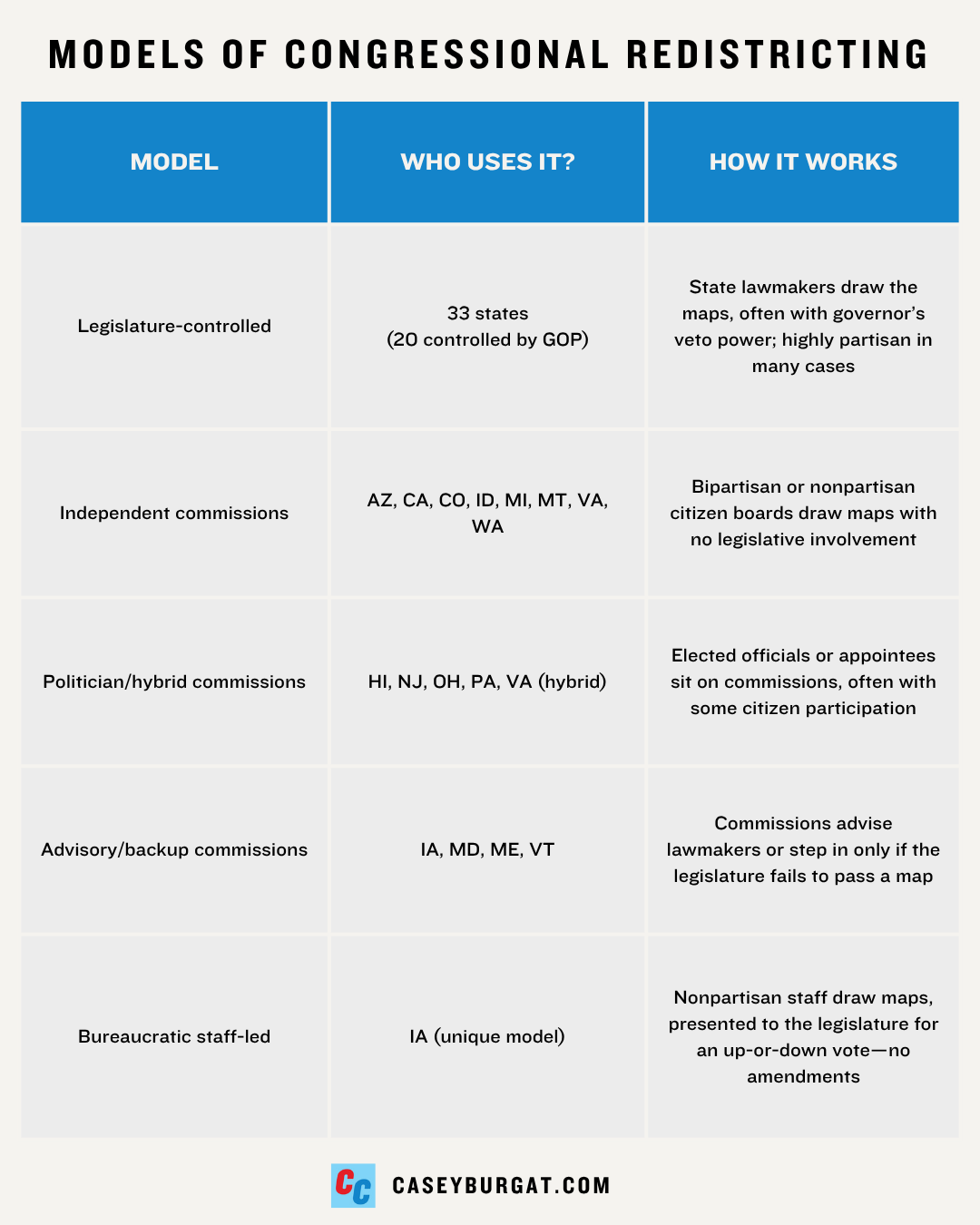Map Wars: The Texas Gerrymandering Fight Explained
Plus some shameless self promotion. (I'm sorry).
Amazon just dropped the kindle edition of my book We Hold These “Truths” to only $2.99. Almost free! No cheaper time to learn about all of the myths in our politics!
Plus, I was a guest on the amazing Pantsuit Politics podcast. Check out the episode on Apple, Spotify, YouTube, or Substack!
Texas Republicans are pushing a controversial plan to redraw the state’s congressional map—again—just a few years after the last redistricting. The goal? To lock in up to five more GOP-held seats in Congress ahead of the 2026 midterms, a move former President Trump defended by saying, “We are entitled to five more seats” because of his past vote totals in the state.
The effort has triggered walkouts by Texas Democrats, lawsuits, and a wave of copycat threats in other states, reigniting a national fight over gerrymandering—one of the nation’s most unpopular but most practiced political pastimes. What’s different this time is how explicit and out in the open it is: the partisan intent isn’t hidden, it’s proudly declared. And with control of the House often decided by just a handful of seats, these aggressive redrawing efforts could determine which party holds the majority for years to come.
What Is Gerrymandering—and How Did We Get Here?
Every ten years, following the U.S. census, states redraw their congressional and legislative district maps to reflect population changes. If a state gains a seat due to population growth, it must adjust its district boundaries to accommodate the new representative. This redistricting process creates an opportunity to reshape the political playing field—and, in more extreme cases, to engage in one of the most notorious and hated practices in politics: gerrymandering.
Gerrymandering is the art of drawing electoral boundaries to benefit one party, group, or incumbents—think “packing” opposition voters into a few districts or “cracking” them across many to weaken their impact. Throughout history, both parties and many states have made use of the practice.
For your next nerd trivia night, the term “gerrymandering” goes back to 1812, when Massachusetts Governor Elbridge Gerry signed a map that created a district that looked like a salamander—and the word “Gerry‑mander” was born. Americans have been redrawing maps to pick their voters instead of voters choosing them ever since.
The practice escalated dramatically in the 2010s. GOP-targeted efforts like the REDMAP project flipped multiple state legislatures, enabling Republicans to draw congressional maps that let them hold the House despite losing the popular vote in some states. Courts have limited racial gerrymandering, but federal judges said in Rucho v. Common Cause (2019) that purely partisan challenges are political matters—not judicial ones.
Who Draws the Lines is Key
Every ten years, after the census, states redraw their district lines—but who draws those lines varies widely, and it makes a huge difference in how partisan the maps end up.
In most states, the legislature draws the maps—meaning partisan politicians are deciding the district boundaries. But others have shifted to commissions in an effort to make the process less partisan (with mixed results). Here's how it breaks down:
And for my visual peeps, a map:

Why Republicans Have the Edge in the Gerrymandering Fight
Here’s the plain truth: even if Democratic states like California and New York promise to redraw their maps in response to Texas, Republicans still hold the advantage.
Why? Because they control more of the states where partisan redistricting is allowed.
Most Republican-led states still let their legislatures draw the maps—and many allow mid-decade redraws like the one happening in Texas right now. Meanwhile, many blue states have tied their own hands by adopting independent commissions or rules that block political interference. That means even if Democrats want to retaliate, in a lot of places, they legally can’t unless they update their state constitutions or laws.
And once one side gains more seats through gerrymandering, they get to write the next round of rules from an even stronger position.
What used to be a behind-the-scenes power play is now happening in broad daylight, with a former president openly demanding more seats and state lawmakers rushing to deliver. The outcome of this fight won’t just shape a few districts—it could decide who controls Congress, and who gets to redraw the rules next. Other states are already preparing to respond, and with no clear rules and no agreed-upon guardrails, there’s no end—and no easy answer—in sight.




This post provided the best education on gerrymandering I’ve heard yet! The discussion about why Republicans are at an advantage over Democrats in a race to redraw districts across the country for the 2026 midterm elections is one I’ve not heard and so enlightening! Thank you!!
Great show on Pantsuit Podcast. As for gerrymandering....yuck!